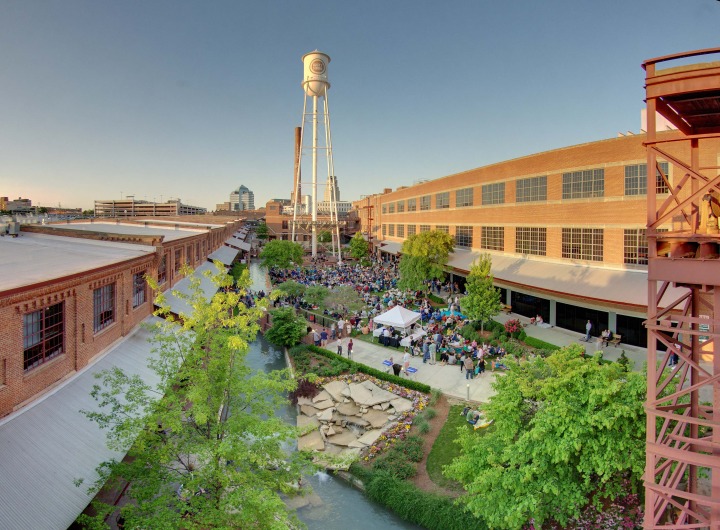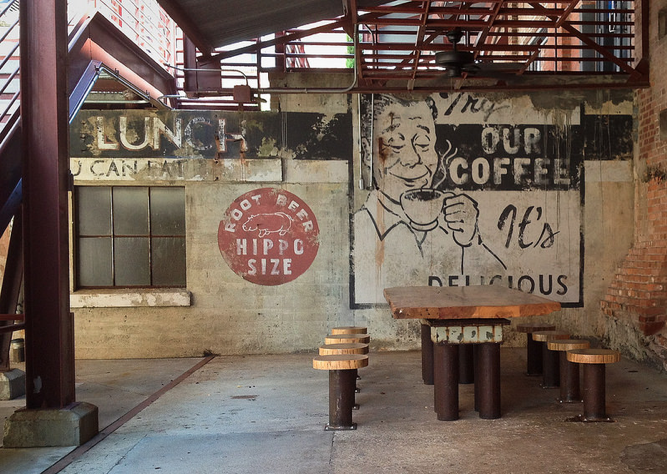Middle markets like N.C.’s Research Triangle are rapidly discovering that they can score big with millennials.

Do I prefer to spend my rather limited income on a car? Do I want to spend my free time commuting? Is a job requiring a suit and tie for me? These are questions that are frequently receiving a resounding “no” from millennials. The “yes” answers are coming for questions like “Do I want to walk to work from a loft apartment? Can I stop in a micro-brewery on the way home? Are there spinning classes or CrossFit studios nearby?”
Wall to wall carpets, cookie-cutter offices, and stiff corporate millwork are becoming the dinosaurs of design giving way to rough hewn plank floors, open soft seating areas for collaboration, and corporate kitchens staffed with trained chefs.
Why the change? The nature of work is changing. Boxes of files processed quietly all day by single workers or lawyers are giving way to tasks run by teams that form instantly around them. “Me” space is less important that “we” space. Closed offices disappear and the entire building becomes fair game for workers as collaborative space rules the day. More than half of the time spent at work by today’s millennials involves solutioning in groups. Space allocations for personal space are declining to increase the space for comfortable soft seating areas, “huddle rooms” of various sizes, and teaming spaces. The boss’s favorite art work is replaced by bold corporate imaging conveying the vision and priorities of the firm.

Wireless laptops, smartphones, telecommuters, and employee “chill spaces” stocked with popcorn, trail mix, six flavors of coffee, and free water now set the tone for work. Yesteryear’s typical 9-5 gives way to responding to at 6:00 am, hosting a conference call including colleagues from 3 countries at 8:00 from home, arriving at work at 10:00, and linger well into the evening to catch a call on another time zone before leaving, only to walk across the street and catch a beer with friends or clients. New urbanism has not just made it to the Triangle, it is being defined and refined in the Triangle.
The implications are rippling through our market. Small funky warehouse spaces are being re-purposed and savvy employers are paying more per sf to locate where workers ignore the clock, working longer and more productively due to the environment created. Work and social time are no longer distinct activities in these workplaces and when the culture is enhanced properly by the setting, productivity and innovation are rising faster than the cost of occupancy.
Heretofore, we would equate the home of hipsters, and millennials to be in New York, San Francisco, Chicago, DC, Atlanta, or Miami—dense, diverse, hubs of creativity, entrepreneurship, and micro-neighborhoods from block to block.
Certainly Brooklyn, Palo Alto, and Boston originate many of the new concepts that earn a definition of cool, but the middle markets are rapidly discovering that their own interpretations can also score with the millennials.
I would suggest that a moderate buzz, trending to a resounding roar is building in markets where smart kids matriculate (Raleigh Durham, Austin, Orlando, and Nashville to name a few). We can call them “MBA/PE/PhD” markets—the homes of UNC/Duke/NCSU, UT-Austin, UCF/Rollins, and Vanderbilt. And that would be one explanation for why talent and employers are locating in these cities.
The value for businesses locating there is more “bang-for-the-buck”. Corporate users can offer a more affordable lifestyle in Sunbelt cities to their recruits where homes are not priced at $500–$1,000 per sf. Office rents in some cases are 30 percent lower than those in the gateway markets. So if the talent pool is equivalent, and the G&A costs are less, these middle market decisions become quite compelling, particularly if weekends are enhanced by neighboring beaches, college games, or mountain cabins are available within a an hour or two.
Certainly Brooklyn, Palo Alto, and Boston originate many of the new concepts that earn a definition of “cool”, but the middle markets are rapidly discovering that their own interpretations can also score with the millennials. Downtown Durham’s renaissance began with the establishment of the American Tobacco District, a warehouse conversion that deserves national accolades, complete with a developer conceived million gallon river rushing between buildings. The Durham Bulls stadium and Durham performing Art Center surround it. Nearby are restaurants and bars that earned Durham the “Tastiest City in the South Label”.

Raleigh countered by landing Red Hat downtown, and a stodgy Progress Energy building was converted to a creative hub of talent opening spaces for collaboration and unplanned conversations. Citrix noticed the popularity and claimed its early adopter status converting a single story warehouse into a three-story home to 600 knowledge workers, who celebrate NC housing costs over Palo Alto’s.
Orlando’s Creative Village is being conceived to cluster live, work, play within walking distance to NBA games. Master-planning is being based around the tastes and desires of the young employees instead of the New York bankers that finance the projects.
Austin and Nashville bring a vibe unrivaled in virtually any other city when it comes to music, weather, grit, and grace.
Are the ‘burbs in small towns accurately characterized as a bit mundane? Probably. But the urban energy being created in the PhD markets is here to stay and I predict that we will see an occasional big city designer with a camera taking ideas back home from the likes of Raleigh/Durham, Austin, Orlando, or Nashville.


